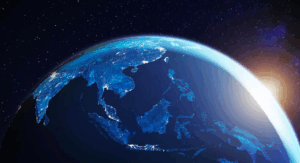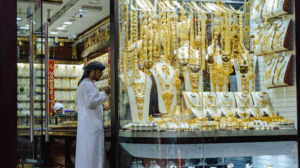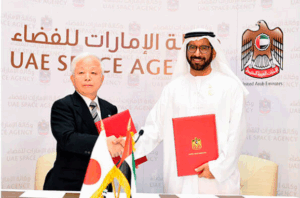According to the successive Intergovernmental Panel on Climate Change (IPCC) reports, transportation is a major polluter with around 7.3 billion metric tons of carbon dioxide (CO2) emissions. 97% of transportation-induced greenhouse gases (GHG) emissions are CO2 from fuel combustion. Among its recommendations to mitigate climate change, the IPCC stressed that electric vehicles (EV) powered by low emissions electricity offer the largest decarbonisation potential for land-based transport, on a life cycle basis (high confidence).
In line with the 2015 Paris Agreement and in the context of the conflict in Ukraine with the related international sanctions, the European Union has joined the race for energy independence. Among the measures taken, the EU agreed to end sales of combustion engine by 2035 and to embark the shift to electric engines. To achieve its energy transition and secure its competitiveness in the automotive sector, the EU has to take up a new challenge by developing batteries production.
EV battery (EVB) amounts to 40% of the EV costs. The EVB consist of critical raw materials (CRM) including notably lithium-ion (Li), cobalt, graphite, as well as rare earth minerals (REE), nickel and geranium. Whereas most of these raw materials are not available in the EU, EU Members States have to cope with a new vulnerability: that China’s dominance in the supply of CRM.
The purpose of this first article related to EVB is to identify China’s political and legal strategies on raw materials to enforce its sovereignty over natural resources.
Starting in the 1980s, China has been shoring up steadily its sovereignty on raw materials to become a key player in the supply chain of the EVB (I). After decades of fearsome international and domestic policies (II), China is on the verge of winning the “green business” of EVB, if not achieving a complete victory by using a trojan horse such as the European Battery Alliance (III).
(I) How China became the key player in the supply chain of EVB
According to the International Energy Agency (IEA), a typical electric car requires 6 times the mineral inputs of a conventional car. The IEA estimates that the scaling up of green technologies necessary to meet the Paris Agreement goals would increase the global demand for lithium 42 times between 2020 and 2040, 25 times for graphite, 21 times for cobalt and magnesium, 19 times for nickel, 7 times for rare earth minerals.
China, together with Africa and Latin America, provides 74% of all battery raw materials.
Dependent on imports, the EU has published its 4th list of Critical Raw Materials (CRM) and an action plan of 10 measures aimed at promoting the resilience of raw materials supply chains within the New Industrial Strategy for Europe. In the EU, CRM are defined as raw materials which are economically and strategically important for the European economy but have a high-risk associated with their supply.
China goes further in the qualification of raw materials. A list of 24 minerals are classified as strategic because they are needed to “safeguard national economic security, national defence security, and the development needs of strategic emerging industries.” Published in 2016, the list fits in with the broader National Mineral Resources Plan (2016-2020).
At present, China provides around 62% of all the 30 CRM listed by the EU, notably lithium, cobalt and REE. The PRC has emerged as the leader in the global battery industry across all segments of the value chain (mining, refining, production, recycling) and supplies today 66% of finished lithium-ion batteries.
Lithium
Chinese companies hold majority or controlling stakes in many of the leading assets and companies extracting lithium and producing battery grade lithium products outside the country. The Chinese company Tianqi Lithium holds a majority stake in the joint venture owning the largest lithium mine in the world in Greenbushes, Australia.
China might contemplate proceeding with a foreign direct investment in the so-called “Saudi Arabia of Lithium”, i.e. Afghanistan.
From 2018 to 2021, Chinese companies spent more in acquisitions of foreign lithium mining and processing facilities than all other countries combined. China hosts the majority of the world’s lithium hard-rock minerals refining facilities and accounts for almost three-quarters of lithium-ion battery manufacturing capacity.
Cobalt
In 2020, more than 65% of global cobalt mine production originated from the Democratic Republic of the Congo. DRC’s cobalt reserves were estimated at 3,600 million tons, representing more than 50.7% of the world’s reserves of this mineral.
For decades Chinese-owned companies have invested heavily in Congo. In early 2022, China Molybdenum has invested $2.5 billion to double its cobalt output in the DRC to become the world’s largest cobalt producer in 2023, displacing Swiss mining giant Glencore.
At present, Chinese companies control or finance 15 of the 19 cobalt-producing mines in the country. Its dominance is even greatest in cobalt refining.
Rare Earth Elements (REE)
As early as 1992, Deng Xiaoping stated: “The Middle East has oil, China has rare earths.” The Chinese government declared rare earths as a protected and strategic mineral. Projects on rare-earth mining and smelting required approval from the State Development and Planning Commission (SDPC), where foreign investors could only participate in joint ventures with Chinese firms.
From the 1980s to the early 2000s, China artificially deflated the cost of REE exploration and production so that Western companies and mines had to close. The output level continued to rise significantly until 2008, when China accounted for over 90% of the world’s output of rare earths. To prohibit illegal mining, the government implemented a unified pricing mechanism, and issued production quotas to limited mining companies.
In December 2021, China’s second largest rare-earth mining company, Minmetal Rare Earth, merged with two other Chinese producers to form a giant state-backed monopoly, responsible for 70% of China’s heavy rare earth production. The CCP-driven action aimed at amplifying China’s control over pricing and the global rare earth market in general.
China mines almost 60% of the world’s REE used in EVB. In 2021, Chinese companies control up to almost 80% of the worldwide REEs production and more than 90% of its refining processes. China also dominates the recycling of lithium-ion batteries and the heavy electric vehicle segment with, in particular, 98% of the world e-bus market.
(II) China’s domestic and international strategies to win the “green business” of EV
Raw materials remain at the core of world geopolitics. China’s dominance in the natural CRM and REE gives us a perfect illustration. From displacing foreign companies to establishing control over of new energy supply chains, China has been shoring up steadily its sovereignty on raw materials.
Since the mid-2000s, China has embarked on a policy of massive investment in the field of energy.
In domestic policy: the use of lawfare and… deep pockets
In 1986, China already initiated the National High-tech R&D Program (863 Program), an applied research and development program involving Chinese automakers, suppliers, universities, and independent laboratories. Sixteen years ago, it shifted its focus to “New Energy Vehicles” (NEVs) aiming to securing its first-mover advantage on PEVs.
From 2010, Beijing required all foreign brands with access to the Chinese market to form joint ventures (JV) with Chinese automakers and transfer their intellectual property rights relating to the technologies. Foreign companies that failed to comply with these requirements have been barred from selling their electric vehicles in the country.
In 2015, China’s industrial strategy ‘Made in China 2025’ (MIC2025) called on Chinese companies to ensure that 70% of the components and materials being used should be sourced domestically by 2025.
Besides bank loans to Chinese supplier to gain access to raw materials, another key feature of China’s advanced-vehicle policy was nationwide vehicle subsidies for PEVs. Subsidies were available only to companies assembling vehicles in China. Foreign companies exporting PEVs to China, such as Tesla, were not only subject to China’s stiff 25% tariff on imported cars but also ineligible for PEV subsidies. To qualify from these subsidies, Chinese automakers had to use an approved Chinese supplier of lithium-ion batteries.
In 2021, China integrated its state-driven extraction strategy with its domestic manufacturing and industrial policy. Last December, Xi Jinping demanded to ensure China’s self-sufficiency in key commodities, including energy and minerals to prepare for shifting international relations as part of the country’s long-term agenda and its ”comprehensive conservation strategy”.
In foreign policy: the strategy of cooperation agreements to hamper international trade
China’s Belt and Road Initiative (BRI), one of the largest development projects in China’s history, plays a key role in the EVB race. The BRI allows Beijing to gain foreign market access through government-to-government arrangements, aiming at interconnecting the Global South and moving the centre of the world economy further East.
In terms of influence strategy, China’s Tianqi Lithium Corporation chairs the Lithium Committee of the London Metal Exchange. In 2019, the mandate was to support ‘the adoption of reference pricing in physical delivery contracts.’ The International Organization for Standardization (ISO) created a Technical Committee on Lithium, with China serving as Secretariat, to standardize conditions in ‘the field of lithium mining, concentration, extraction, separation and conversion to useful lithium compounds/materials’.
China also uses legal instruments to restrict exports of CRM and REE: export prohibition, export quota, export tax and licensing requirement. Though the quantitative restrictions are prohibited under Article XI of the World Trade Organization (WTO), incorporated mutatis mutandis in Article 2.10 of the Comprehensive and Progressive Agreement for Trans-Pacific Partnership (CPTPP) and Article 2.17 of the Regional Comprehensive Economic Partnership (RCEP), China argues that it falls within the exceptions as a strategic mineral (against CRM definition – See (I) above).
In mid-August of 2022, China has played another card by forgiving 23 interest-free loans to 17 African countries. In a “win-win” approach, Beijing has made agreements with 12 countries on the African continent to remove tariffs for 98% of the products they export to China and expand co-operation in emerging industries such as the green and low-carbon sectors…
(III) China’s Trojan horse: the European Battery Alliance
According to Benchmark Minerals Intelligence, China has 122 operating advanced battery mega factories. China will have nearly three fourths of the world’s 200 advanced battery mega factories by 2030. In 2021, Europe and North America only had 21 operating and 11 planned factories.
Compared to China, Europe is 30 years behind in its politics strategy on CRM.
In June 2022, at the G7 Leaders’ summit, members recommended to scale-up cooperation to address the security of CRM supplies and the many vulnerabilities due to the concentration of production, export restriction, as well as the chronic lack of transparency and persistent market asymmetries. Like a Trojan horse, China was far ahead of the G7 recommendation: In Germany, the Chinese battery-maker CATL has completed its €1.8 billion investment in a plant to supply Volvo and BMW with battery cells, while LG Chem, the South Korean industrial giant, secured almost €500 million from the EIB to expand its Polish plant. In France, the Envision group has taken over the Nissan batteries division and “cooperates” with Renault.
When a competitor becomes a shareholder or significant investor in Europe, the room for manoeuvre for EU countries to bring a WTO action against Chinese quantitative restrictions is shrinking. It is unlikely that the G7 recommendation (non-binding) to strengthen environmental protection during extraction and along supply chains (e.g. climate smart mining) may be enough for EU countries to catch up in the race towards energy independence. The import restrictions based on environmental concerns that EU countries may put in place could in turn be deemed in breach with the WTO. Checkmate…
But this recommendation also leads to another question: to what extent is the electric vehicles (EV) market genuinely “green”?
Chinese policy in the EV sector demonstrates that legal tools (international treaties, commercial law, foreign direct investments, intellectual property rights, etc…) are strategic weapons to be considered at a very early stage of policies in order to safeguard sovereignty.
Picture credits: XuJun / Shutterstock







Be First to Comment